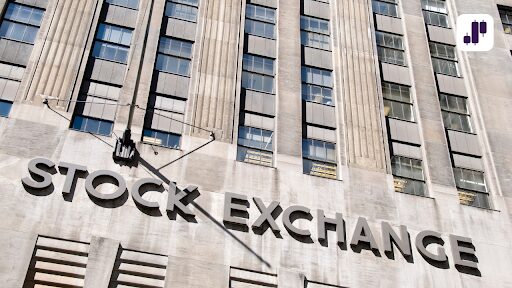The stock market may seem complex and confusing, especially if you’re just starting your investment journey. But in reality, it’s a place where ordinary people—just like you—can become co-owners of the world’s largest companies, such as Apple or Walmart, and grow their wealth over time. Imagine buying a small stake in a company that produces your favorite products and earning a profit when it grows. That’s the essence of the stock market! In this article, we’ll break down how it works, what beginners need to know, and how PredictStock helps make your first steps in investing easier and more confident.
What is the stock market?
The stock market is a place where company shares are bought and sold, along with other financial instruments such as bonds and ETFs (exchange-traded funds). Simply put, it’s a massive marketplace where investors (from individuals to large funds) exchange ownership in businesses. When you buy a stock, you become a shareholder in the company, giving you the right to a portion of its profits (through dividends, if they are paid) and its growth in value.
The stock market plays a key role in the economy: it helps companies raise capital for expansion and allows investors to profit from that growth. For example, if a company like Home Depot (ticker: HD) wants to open new stores, it can issue shares to raise money, and by purchasing those shares, you become part of its success.
How is the stock market structured?
The stock market consists of several key components that work together to enable stock trading. Let’s go through them step by step.
1. Stock exchanges
Exchanges are the primary platforms where trading takes place. The most well-known stock exchanges in the U.S. are:
- NYSE (New York Stock Exchange): Trades shares of major companies like Johnson & Johnson (ticker: JNJ) or Coca-Cola (ticker: KO).
- Nasdaq: Known for tech companies like Microsoft (ticker: MSFT) or Meta (ticker: META).
Exchanges function like auctions: buyers and sellers set their prices, and trades occur when their offers match. For example, if you want to buy Netflix stock, you set the price you’re willing to pay, while the seller sets their asking price. When your prices match, the trade happens.
2. Stocks and tickers
Stocks represent shares of a company that you can buy. Each stock has a unique identifier called a ticker symbol, used for trading on the exchange. For example:
- Bank of America stock: BAC
- Target stock: TGT
- FedEx stock: FDX
Tickers make it easier to find and trade stocks. With PredictStock, you can enter a ticker—like GS—and instantly get data on growth, ratings, and “Buy/Hold/Sell” recommendations to help decide if it’s a good investment.
3. Brokers
To trade on the stock market, you need an intermediary—a broker. This is a company or platform that provides access to the exchange. Popular brokers like Fidelity, Robinhood, or Interactive Brokers allow you to open an account, deposit funds, and start buying stocks. Brokers charge fees for trades, but many modern platforms offer commission-free trading, which is ideal for beginners.
4. Market indexes
Indexes measure the performance of the market or specific sectors. They help investors understand overall trends. The most well-known indexes are:
- S&P 500: Includes 500 of the largest U.S. companies, such as Amazon (ticker: AMZN) and Mastercard (ticker: MA). If the S&P 500 is rising, it usually means the market is in good shape.
- Dow Jones Industrial Average (DJIA): Tracks 30 major companies like American Express (ticker: AXP).
- Nasdaq Composite: Reflects the performance of tech companies like PayPal (ticker: PYPL).
You can invest in indexes through ETFs (e.g., VOO for the S&P 500 or QQQ for Nasdaq), allowing you to gain exposure to the broader market.
5. Market participants
Different participants play a role in the stock market:
- Retail investors: Individuals like you who buy stocks to grow their wealth or earn passive income.
- Institutional investors: Large funds, banks, and hedge funds that trade in high volumes.
- Companies: Issue shares to raise capital for expansion.
- Regulators: Organizations like the SEC (Securities and Exchange Commission) ensure that trading follows rules and protects investors.
How does trading work?
Trading stocks follows a few simple steps:
- Opening an account: You choose a broker, open an account, and deposit funds.
- Selecting stocks: You decide which stocks to buy, such as Costco shares or the VOO ETF.
- Placing an order: You specify how many shares you want to buy and at what price. There are two main types of orders:
- Market Order: Buying at the current market price.
- Limit Order: Buying at a price you specify.
- Executing the trade: The exchange matches you with a seller, and the trade is completed.
- Holding stocks: Your stocks are stored in your brokerage account, and you can sell them at any time.
Stock prices change based on supply and demand. If more people want to buy Nike shares than sell them, the price rises—and vice versa. These price changes depend on many factors, including company earnings, news, economic conditions, and investor sentiment.
Why is the stock market important for you?
The stock market offers you opportunities to:
Grow Your Wealth: If you buy shares of a growing company, their value may increase, earning you a profit. For example, if you buy Etsy stock at $50 and it rises to $75, you make $25 per share.
Earn Passive Income: Some companies, like AT&T (ticker: T), pay dividends—regular payments to shareholders.
Diversify Your Savings: Instead of keeping money in a bank account where inflation reduces its value, you can invest in assets that grow over time.
By understanding how the stock market works and using tools like PredictStock, you can make smarter investment decisions and take control of your financial future.



































